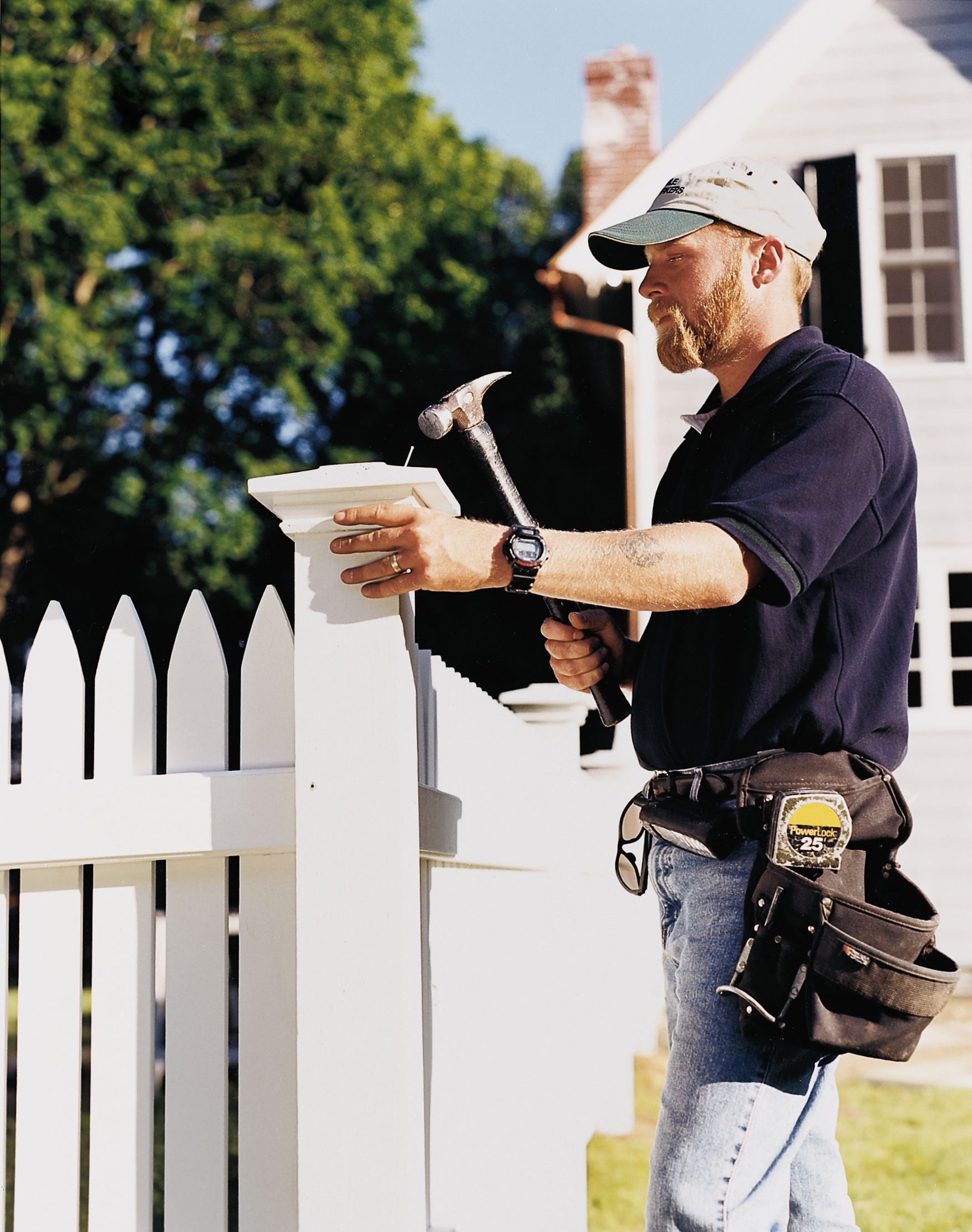Project details
Skill
Cost
Estimated Time
We may be compensated if you purchase through links on our website. Our team is committed to delivering honest, objective, and independent reviews on home products and services.
A properly built picket fence can beautify a home’s landscape, define property lines, and improve home security. While building a fence from scratch requires considerable time and woodworking skills, prefabricated fencing sections make this project more accessible to most homeowners. The preassembled fencing panels come in a wide variety of sizes and styles, including picket, stockade, and square spindle. This guide will walk you through the process of installing a picket fence, from preparing the ground to hanging the gate.
Picket Fence Overview
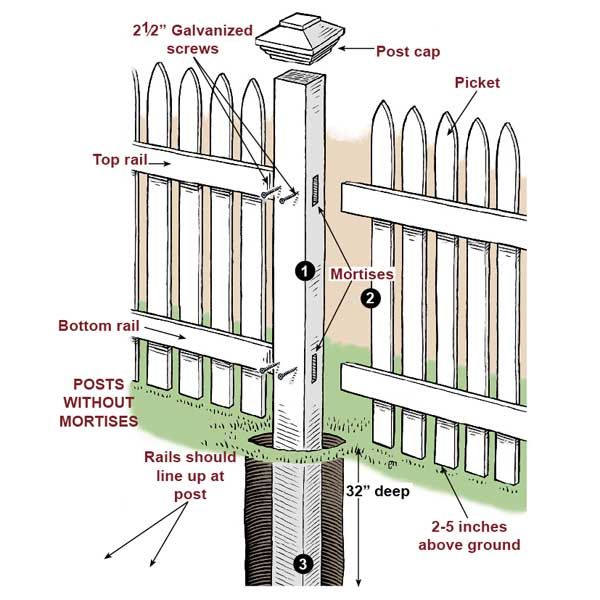
Before you begin your picket fence installation, map out the fence line, determine the number of posts and panels needed, and gather all the tools and materials you’ll need. Check local zoning laws and homeowners’ association rules regarding fence height and placement.
Prior to any digging, call 811 or your local utility locator service to mark all buried utility lines. This step will keep you safe and save you money by avoiding accidental damage. Notify your neighbors about your project to ensure there are no disputes and that they know about any disruptions during the installation process.
Dig the First Posthole

The foundation of a sturdy fence lies in properly set posts. Here’s how to dig your first posthole:
- Locate the position for your first post. Spread a tarp nearby to catch the excavated soil. This will make cleanup easier and protect your lawn.
- Start digging a 10-inch-diameter hole with a shovel.
- Use a Gibbs posthole digger to excavate to a depth of 32 inches, maintaining the 10-inch diameter throughout.
- Use a digging bar to break up any rocks and cut through roots you encounter.
- Discard rocks larger than a billiard ball to make sure your post sets properly.
Evaluate the soil conditions in your yard. Sandy or soft soil may require deeper or wider holes, while rocky soil may need special tools for digging.
Set the First Post
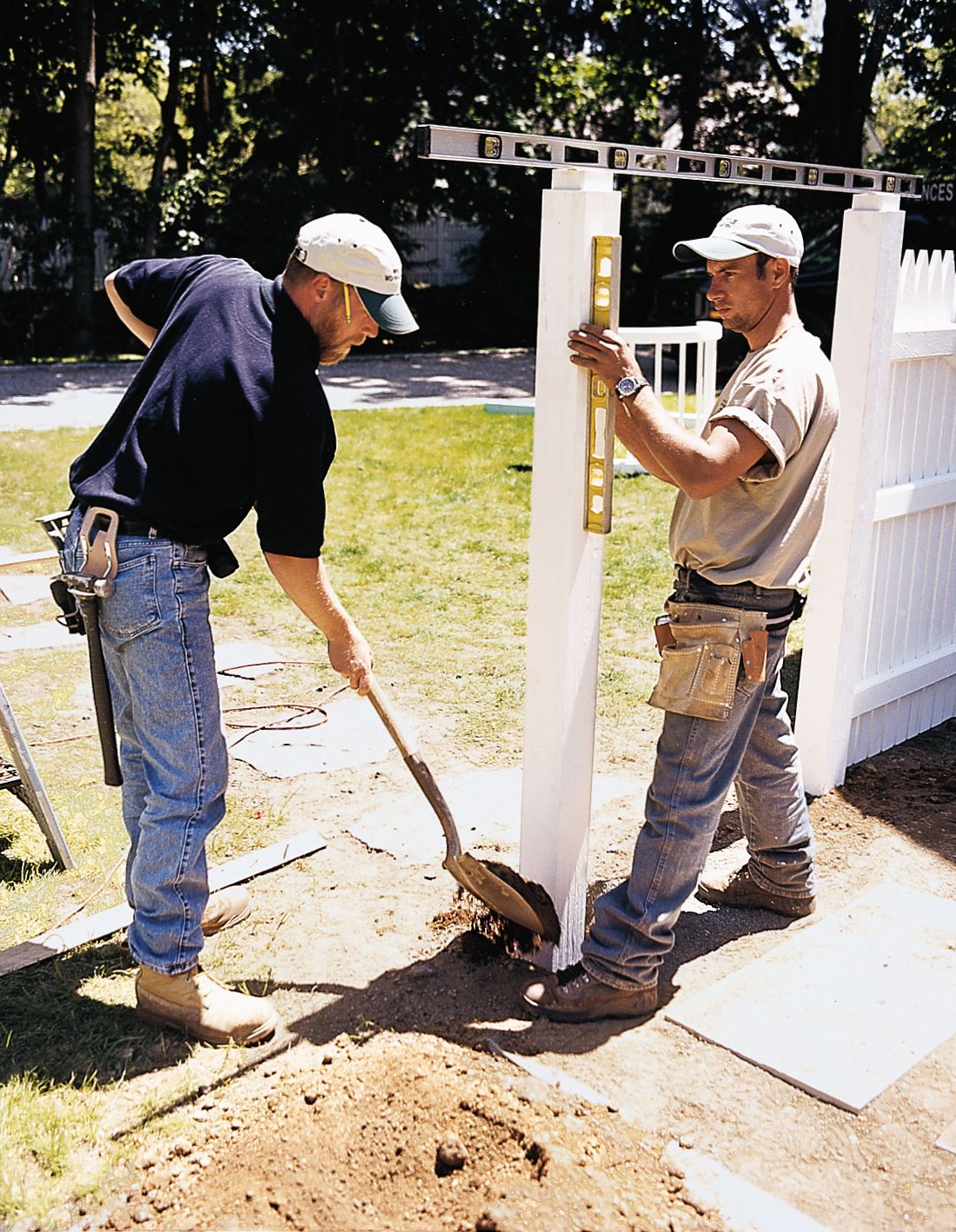
After digging the first posthole, you can set your first post by following these steps:
- Place the post in the hole, adjusting its height so the bottom of the pickets will be 2–5 inches above the ground.
- Add 8 inches of soil to the hole and check that the post is plumb using a level on two adjacent sides.
- Once it’s plumb, compact the soil tightly around the post using a tamping bar.
- Continue adding soil in 8-inch increments, checking for plumb and tamping after each addition until the hole is filled.
- Use concrete to set the posts if your area experiences high winds, which will provide added stability.
Dig the Next Posthole
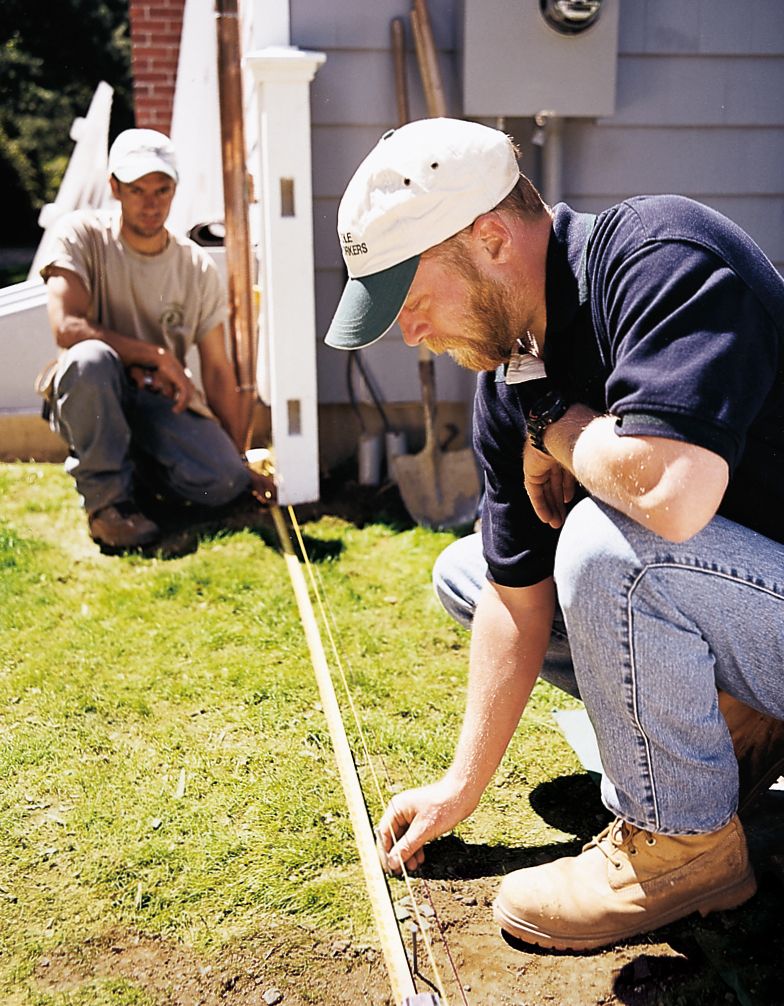
With your first post set, you can prepare for the next section. Here are the steps you should take to dig the next posthole:
- Attach a mason’s line to the outside face of the first post, 5 inches above the ground.
- Measure to the location where your fence’s first corner will be and drive a stake at that location, wrapping the line around it at the same height.
- Measure the length of your fence panel from the first post and mark the spot.
- Dig another 10-inch-diameter posthole at this mark, offsetting it slightly so the post’s face will touch the mason’s line.
Set the Fence Panel
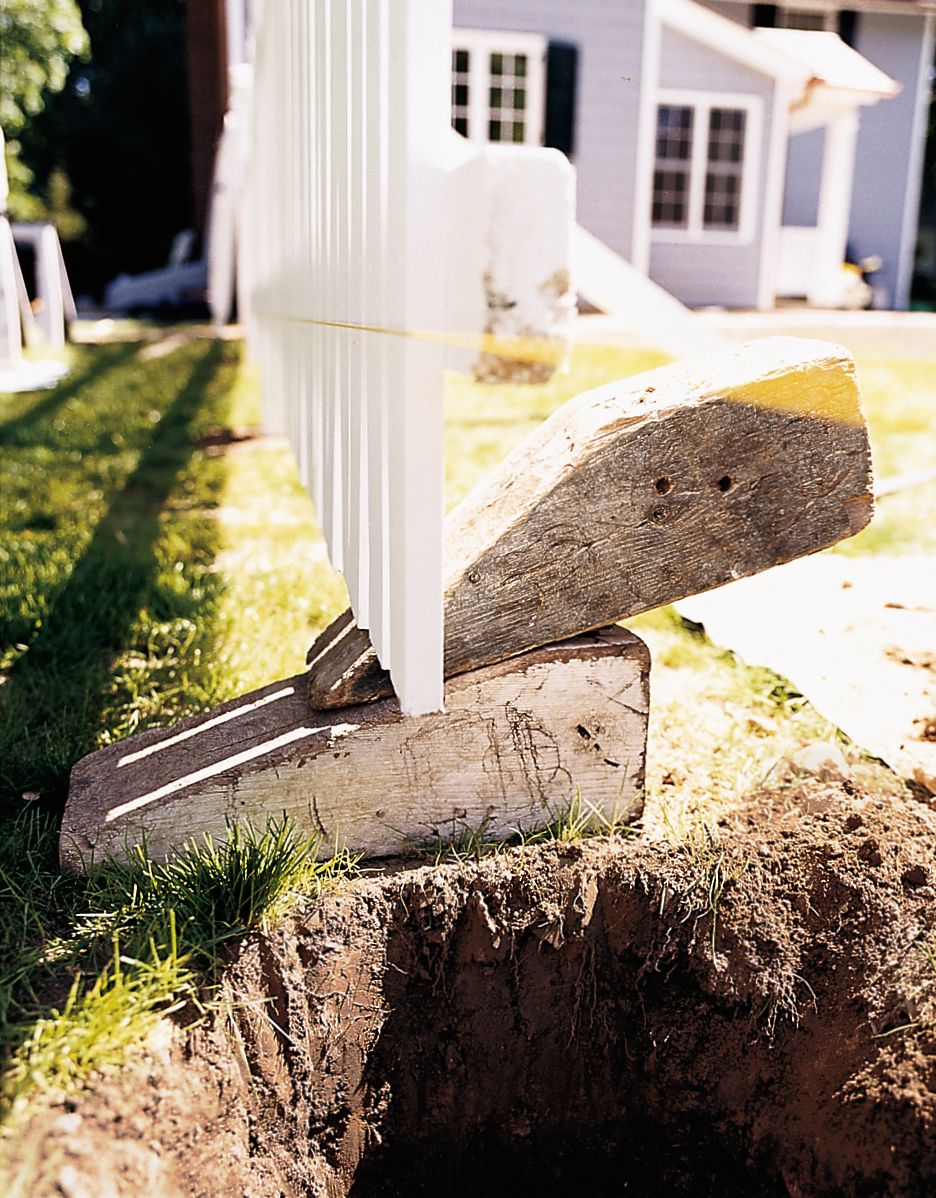
Take these steps to install your first fence panel:
- Slide the panel’s rails into the mortises of the first post.
- Use wood wedges to prop up the far end of the panel, adjusting until the top rail is level.
- For posts without mortises, prop the panel so the top rail is level and the picket bottoms nearest the post are 2–5 inches off the ground. Secure the rails to the post with screws.
- Check that the picket bottoms at the far end are between 2 and 5 inches above grade. If not, you may need to rack the panel (see next step).
Uneven panels can result in an unsightly and unstable fence. Call a family member or friend, if needed, to manage the stability of the panel during installation.
Rack the Panel

Racking allows your fence to follow the contours of your yard while maintaining a consistent appearance. If your ground slopes, you may need to rack the panel to maintain a consistent picket height:
- Lift the panel vertically and lightly drop the end of the bottom rail on the ground or on a wood block.
- Turn the panel end-for-end and drop the end of the top rail in the same spot.
- Repeat this process on both ends until the panel becomes more flexible.
- Refit the rails to the post, then rack the panel so the pickets are vertical and their bottoms are 2–5 inches off the ground.
- Use a wood wedge to prop up the free end.
Attach the Panels

Put the next post into its hole, ensuring its front face touches the mason’s line. For mortised posts, adjust the height and slide the rails into the mortises. Wiggle the post side-to-side so the picket-to-post gap equals the picket spacing. Fill the hole as you did in step three, checking that both the post and pickets are plumb. Secure each rail with 2.5-inch screws.
Repeat the process of digging holes, setting posts, and attaching panels until you reach the end of your fence line. For very long fences, check the alignment and level periodically.
Set the Gate Posts
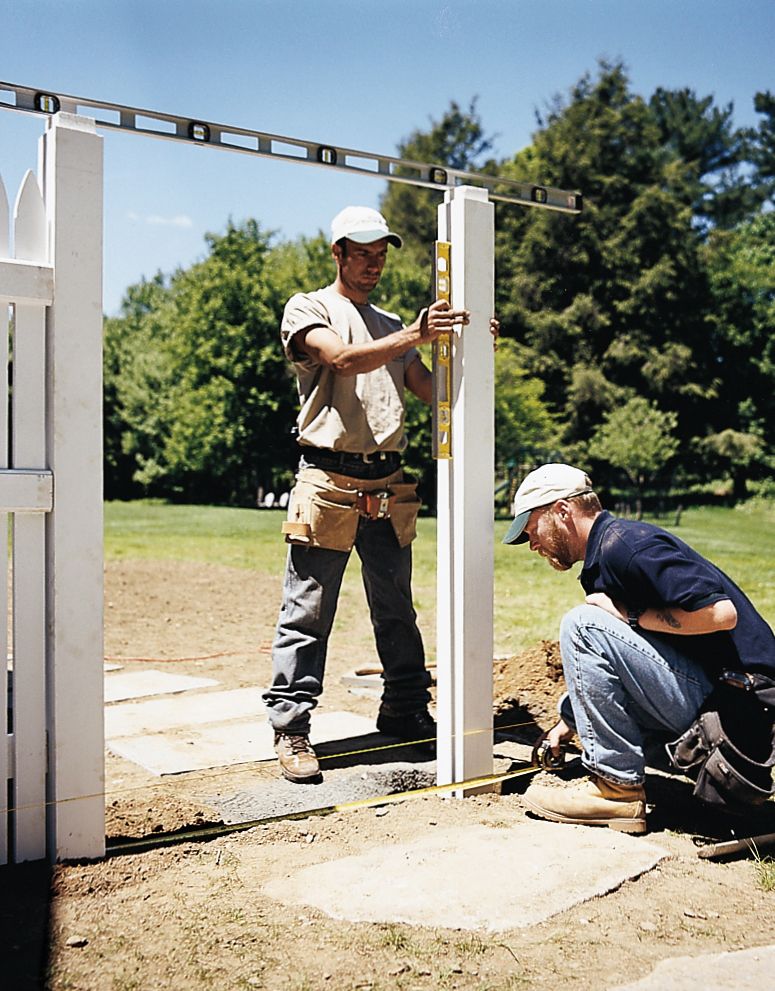
Install the first gate post at the end of a panel, following the same process as previous posts. Measure out the width of your gate, add one and a half inches, and dig the hole for the second gate post.
Set the second gate post, filling, tamping, and checking for plumb as before. Double-check the distance between posts and confirm the post tops are level with each other. Install the next fence panel to help stabilize the second gate post.
Hang the Gate
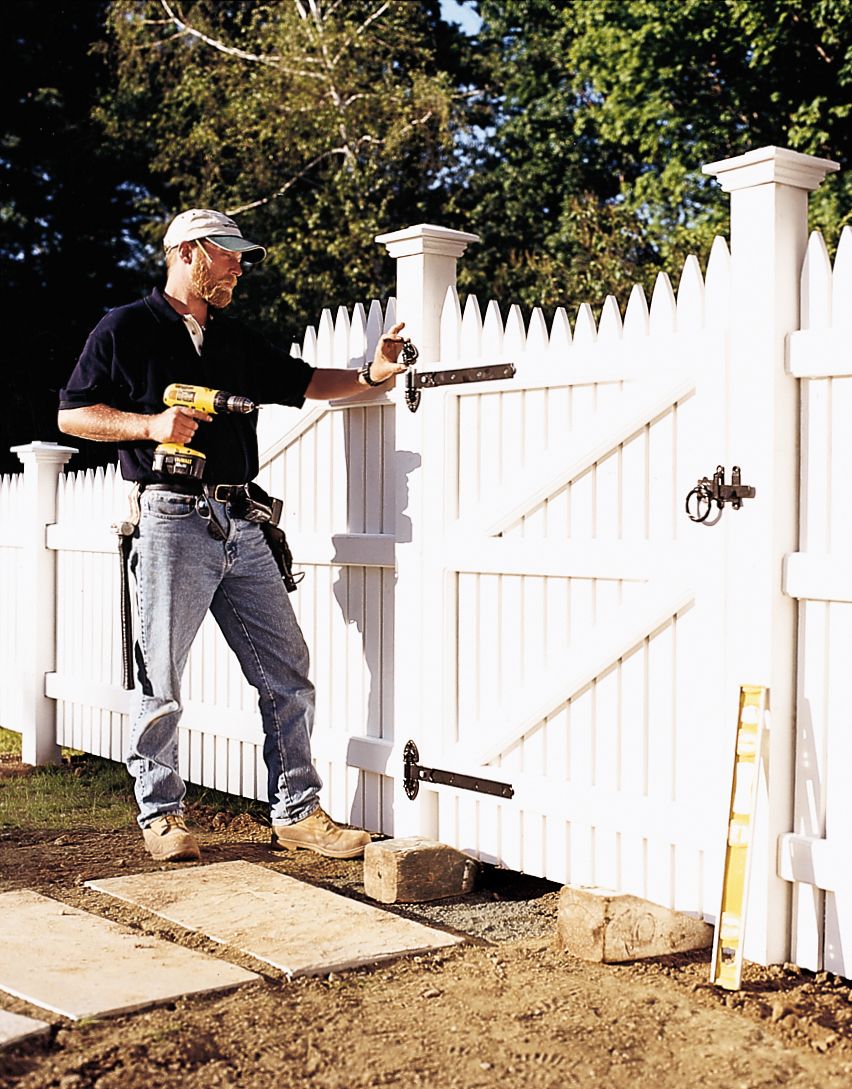
Follow these steps to properly hang your gate:
- Use wedges to prop up and level the gate between the posts, aligning its pickets with those on adjacent panels.
- Leave a 3/4-inch gap between the gate and post on each end.
- Screw the hinges to the post and gate.
- Remove the wedges and check the gate’s swing.
- Attach the latch mechanism.
- Nail caps onto all post tops for a finished look.
Check the gate’s alignment and functionality periodically and make adjustments as needed to prevent sagging or improper closure.
Maintenance and Care of Your Picket Fence
To ensure your picket fence remains functional for years to come, follow these maintenance tasks throughout the year:
- Apply a fresh coat of paint or stain every 2–3 years to protect the wood and maintain its appearance.
- Clean the fence with a mild soap solution and soft brush to remove dirt and mildew.
- Inspect your fence annually for any loose pickets, rails, or posts.
- Trim any vegetation growing near the fence to prevent moisture retention and potential damage.
